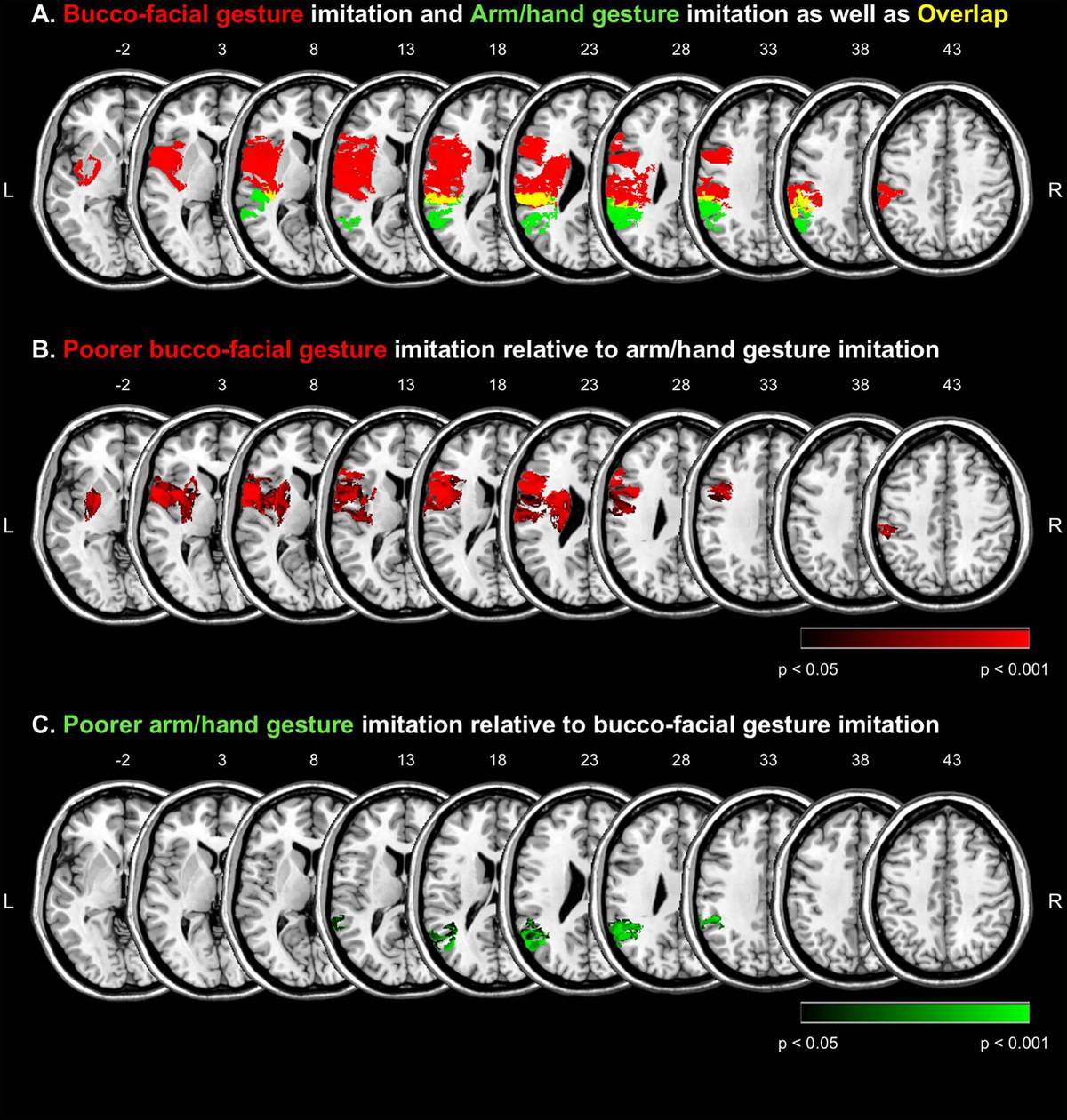Gesture meaning modulates the neural correlates of effector-specific imitation deficits in left hemisphere stroke
Previous studies on left hemisphere (LH) stroke patients reported effector-specific (hand, fingers, bucco-facial) differences in imitation performance. Furthermore, imitation performance differed between meaningless (ML) and meaningful (MF) gestures. Recent work suggests that a gesture’s meaning impacts the body-part specificity of gesture imitation.
We tested the hypothesis that the gesture’s meaning (ML vs MF) affects the lesion correlates of effector-specific imitation deficits (here: bucco-facial vs arm/hand gestures) using behavioural data and support vector regression-based lesion-symptom mapping (SVR-LSM) in a large sample of 194 sub-acute LH stroke patients.
Behavioural data revealed a significant interaction between the effector used for imitation and the meaning of the imitated gesture. SVR-LSM analyses revealed shared lesion correlates for impaired imitation independent of effector or gesture meaning in the left supramarginal (SMG) and superior temporal gyri (STG). Besides, within the territory of the left middle cerebral artery, impaired imitation of bucco-facial gestures was associated with more anterior lesions, while arm/hand imitation deficits were associated with more posterior lesions (Fig. 1). MF gestures were specifically associated with lesions in the left inferior frontal gyrus and the left insular region.

Notably, an interaction of effector-specificity and gesture meaning was also present at the lesion level: A more pronounced difference in imitation performance between the effectors for ML (versus MF) gestures was associated with left-hemispheric lesions in the STG, SMG, putamen, precentral gyrus and white matter tracts (Fig. 2).

The current behavioural data show that ML gestures are particularly sensitive in assessing effector-specific imitation deficits in LH stroke patients. Moreover, a gesture’s meaning modulated the effector-specific lesion correlates of bucco-facial and arm/hand gesture imitation. Hence, it is crucial to consider gesture meaning in apraxia assessments.
Publication:
Kleineberg, N. N., Schmidt, C. C., Richter, M. K., Bolte, K., Schloss, N., Fink, G. R., & Weiss, P. H. (2023). Gesture meaning modulates the neural correlates of effector-specific imitation deficits in left hemisphere stroke. NeuroImage: Clinical, 37, 103331. doi: 10.1016/j.nicl.2023.103331
